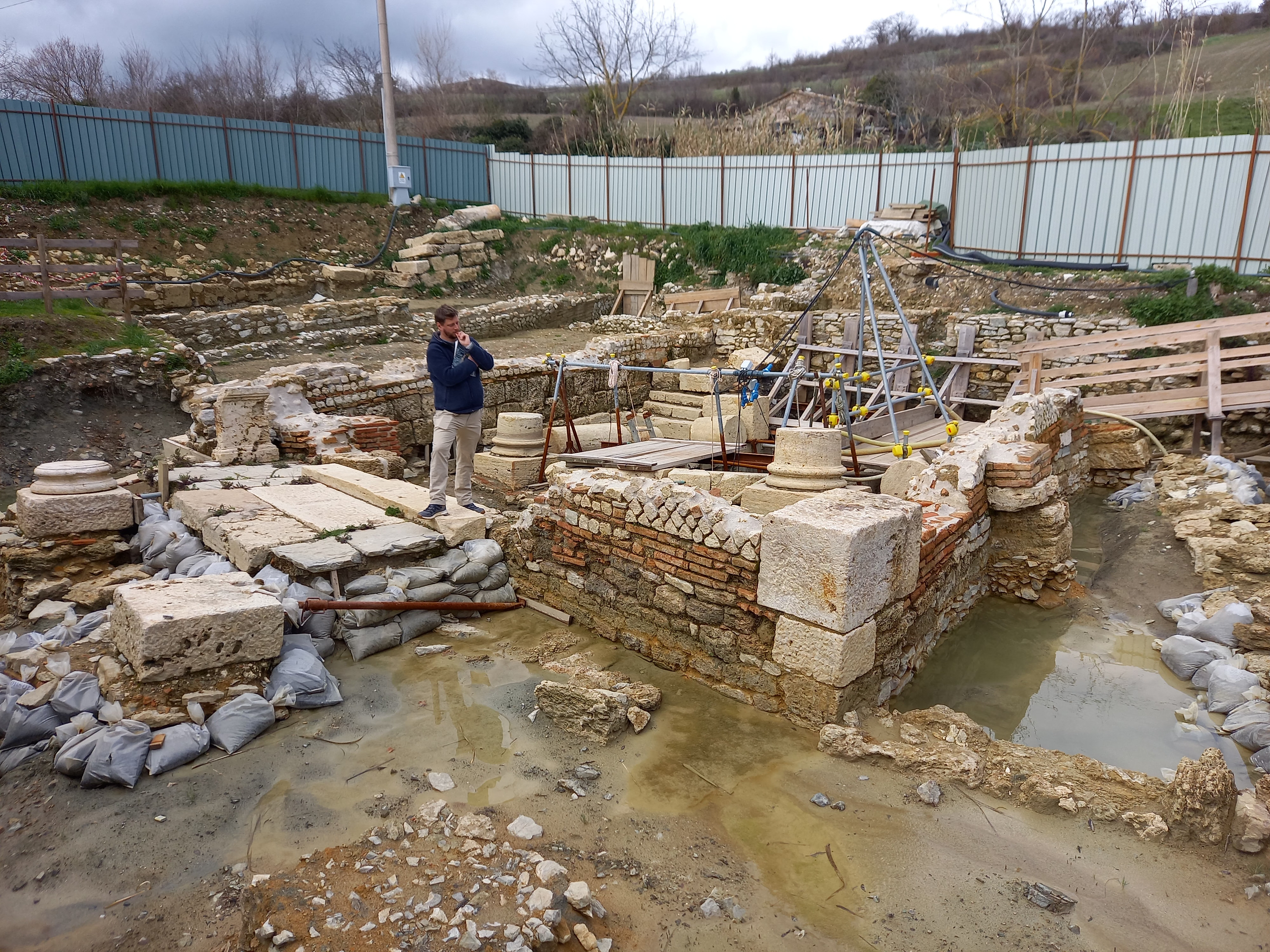San Casciano dei Bagni is situated at the southern-most part of the province of Siena, right on the border with the regions of Lazio (to the south) and Umbria (to the west). It is a small attractive town which was already well-known in mediaeval times. Its picturesque mediaeval appearance seems to be typified by Palazzo Bologna's bulky square tower, which, rather surprisingly, was in fact built at the start of the 20th Century.
The old town centre is made up of a labyrinth of small streets and little piazzas which wind around the hill and lead up to the Collegiata church, which was built between the 13th and 14th Centuries. Inside this church there is a large 15th Century altar-piece depicting St. John the Baptist. Not far from the church there's the oratory of the Conception, a small chapel from the sixteenth century with frescos ascribed to Niccolò Circignani called "Pomarancio".
The oldest building, however, is to be found outside the town's walls near the spa. The Basilicale Church, which was probably built in the 11th Century is very simple but rather striking thanks to its sloping roof.
San Casciano dei Bagni, thanks to the uncontaminated green surrounding area of dense woodland, is now one of the favorite holiday destinations of nature and thermal bathes lovers. For the bathes lovers there are 42 hot springs used to fill a large, modern swimming pool. The thermal springs have been documented since the Etruscan age and were already exploited in the Middle Ages.
A few kilometres away is the Castle of Fighine, which offers unforgettable views of the Valdichiana. Sienne and Orvieto had fought bitterly to conquer the castle. Afterwards Fighine, property of the Monaldeschi d'Orvieto, in 1441 become a property of the Republic of Siena, which achieved the final refurbishment of the castle in 1446.
For information
Thermal baths of San Casciano dei Bagni - Phone nr.. 0039-0578-58023 - Fax 0039-0578-58178
 Scavi del Santuario Ritrovato |
Currently, at the Sanctuary Ritrovato del Bagno Grande in San Casciano dei Bagni (SI) the largest deposit of bronze statues from the Etruscan and Roman ages ever discovered in ancient Italy and one of the most significant in the entire Mediterranean has been found.
These are over twenty statues (made in anatomical parts) which depict the divinities venerated in the sacred place together with the ancient dedicatees. The exceptional state of conservation within the hot water of the spring has also allowed us to preserve wonderful inscriptions in Etruscan and Latin that were engraved on the statues before their creation. Most of these ancient masterpieces date back to between the 2nd and 1st centuries BC. This is a historical period of great transformations in ancient Tuscany, in the transition between the Etruscans and the Romans. In this era of great conflicts between Rome and the Etruscan cities, but also of struggles within the social fabric of Rome, in the Bagno Grande sanctuary noble Etruscan and Roman families dedicated the statues to the sacred water together. An absolutely unique multicultural and multilingual context of peace, surrounded by political instability and war. From the inscriptions we know that the dedicatees came from all over the territory of Chiusi and Perugia with many names that occur in the territory of Siena. It was therefore a sanctuary of interregional value.
The statues had to be positioned on the external edge of the large sacred basin and anchored on the elegant travertine blocks. On several occasions – certainly during the 1st century AD. – the statues were detached from the edge of the basin and placed on the bottom. Therefore it is not a question of a discharge of sacred material into hot water, but rather of a ritual deposition, mediated with the divinity. The votive acts then continued until the 4th century AD. with the deposition of almost six thousand coins (in silver, bronze and gold). Only at the beginning of the 5th century AD the sanctuary was dismantled and closed. The great sacred treasure in the basin was covered by large tiles and the columns of the sacred portico were lowered above to seal the definitive closure of the place of worship.
Approfondimenti
» https://www.sancascianoliving.it/articolo_blog/i-bronzi-di-san-casciano/

